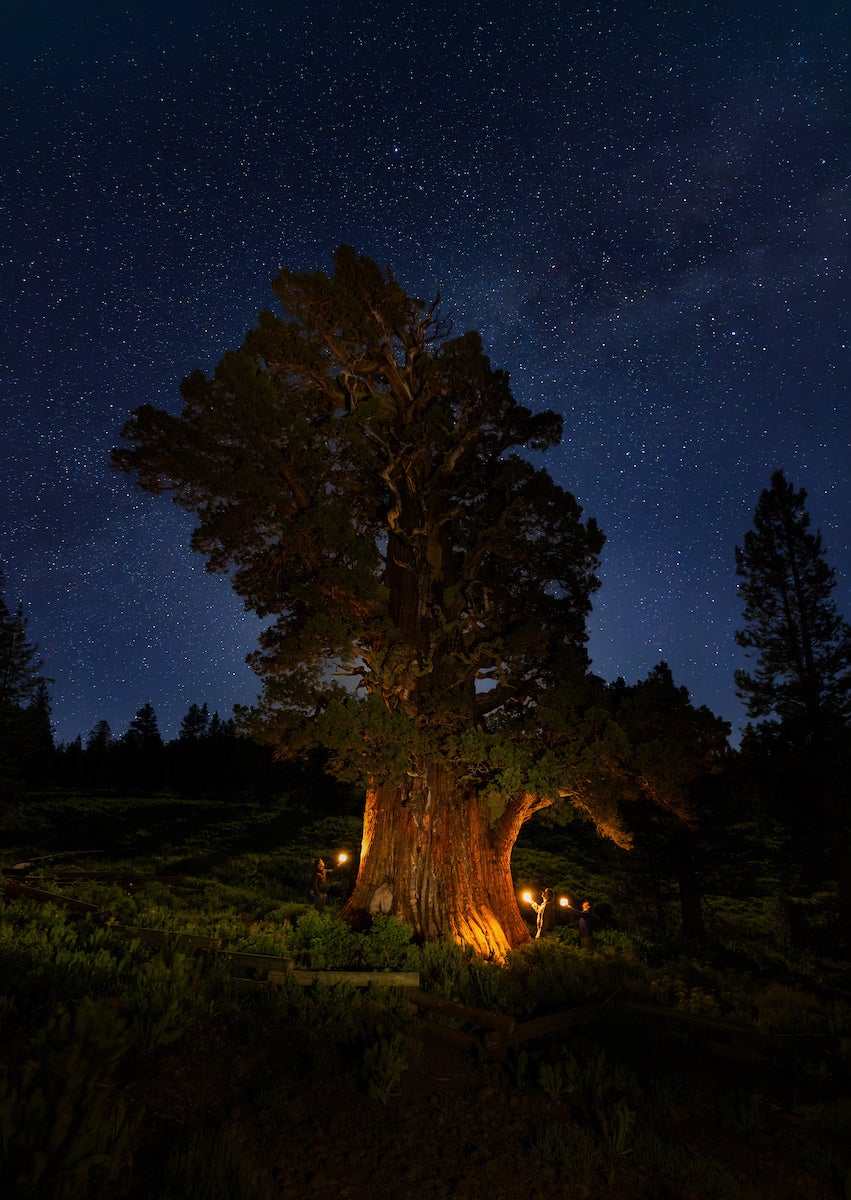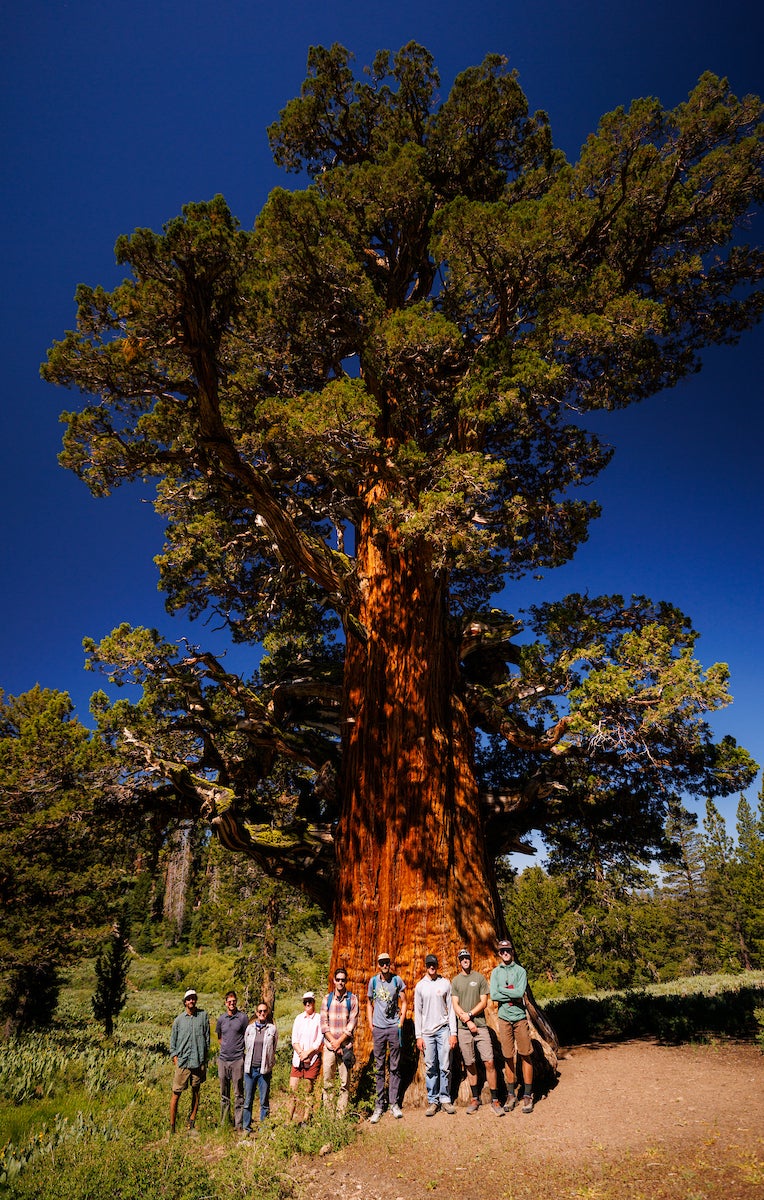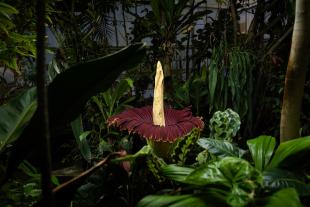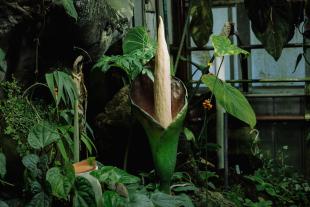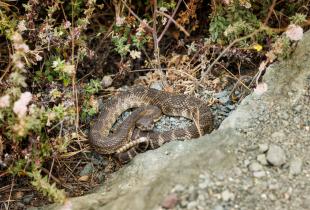'As Hands-On As You Could Get.' Students Document Largest Juniper Tree on Record
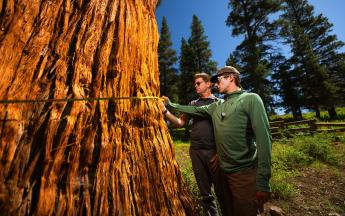
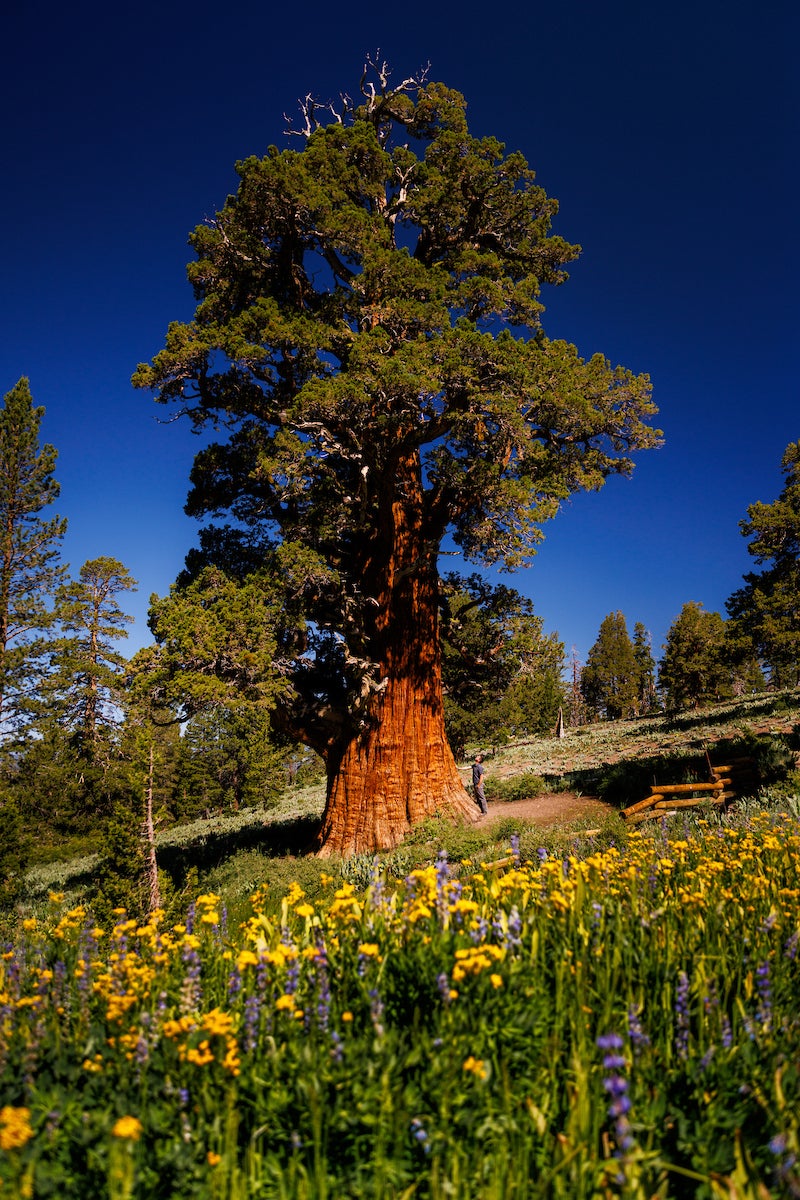
In early July, a caravan of Cal Poly professors, students, and renowned botanists made their way up
Sonora Pass in Stanislaus National Forest in search of the largest Sierra juniper tree on Earth.
And — just over a ridge, nestled in a verdant meadow studded with wildflowers — there it was: the Bennett Juniper.
“The girth of this tree was absolutely insane,” said recent graduate Jake Jackson, one of the students on the trip. Jackson and two other students were invited to come along for a unique botanical experience.
The Bennett Juniper, which is between 3,000 and 4,000 years old, has been known since the 1920s, when a group of Basque sheepherders first came across the impressive specimen. In 1983, it was nominated for the California Big Tree Registry — a branch of the National Big Tree Registry that is now maintained by the Urban Forest Ecosystems Institute, which is headquartered at Cal Poly.
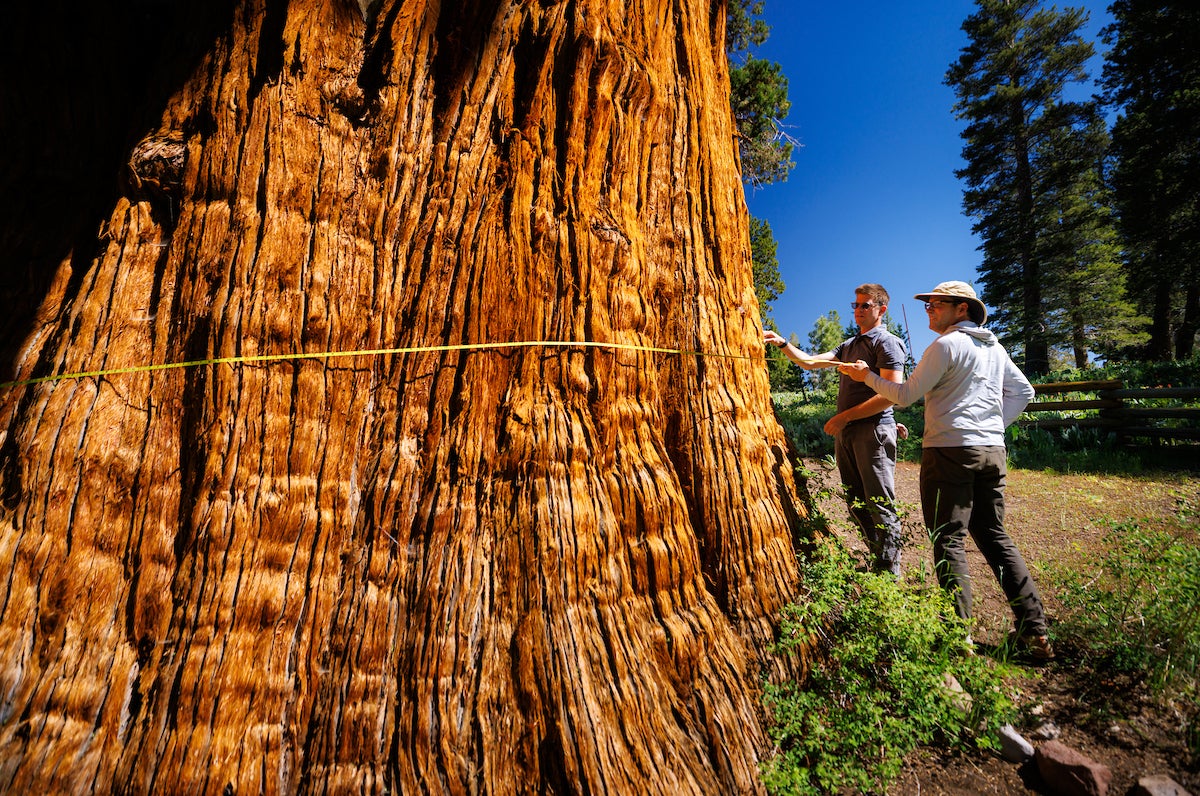
One of the primary uses of the database is to give firefighting agencies an easily accessible list of landmark trees in the state.
“You may have seen images, during wildfires, of firefighters putting Mylar blankets around trees. That data allows them to do that — to protect these iconic trees,” said professor Matt Ritter, California state coordinator for the registry. “We’re not going to let the General Sherman burn up and die if we can help it.”
But earlier this year, the national coordinator notified Ritter that the Bennett Juniper was in danger of losing its status on the registry.
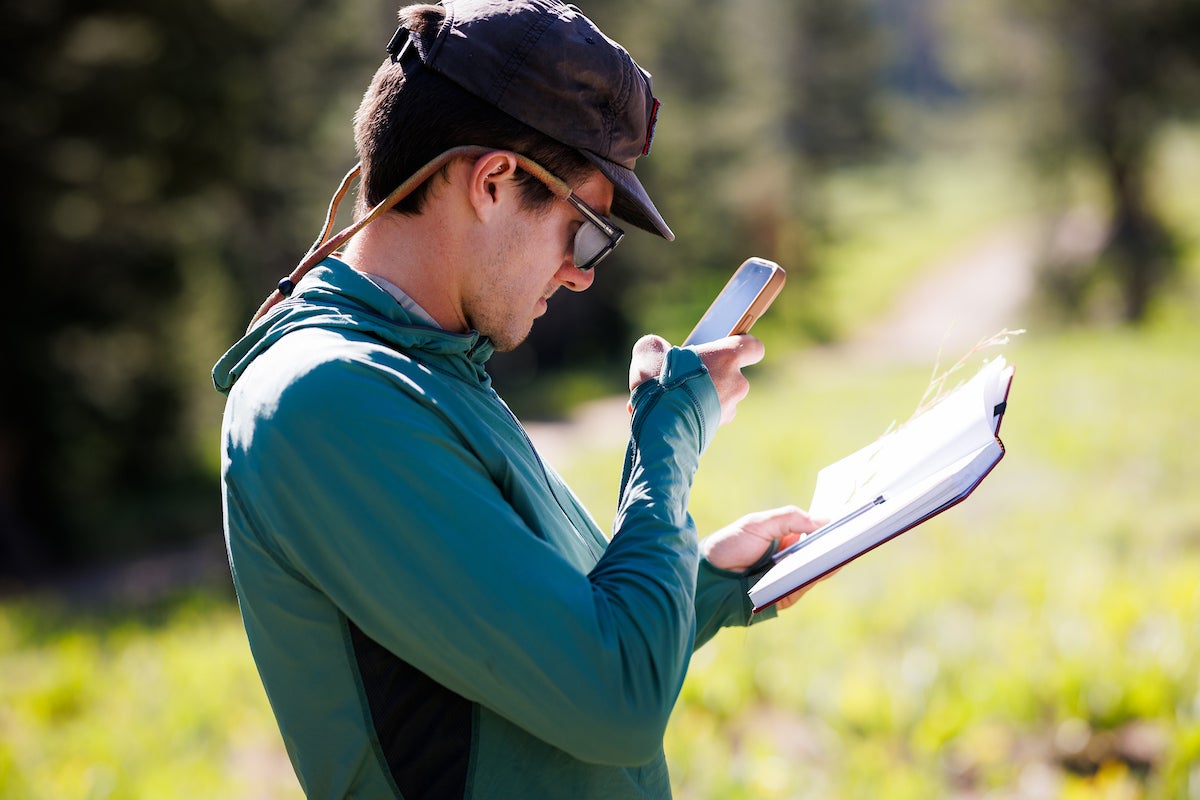
“There's a rule that if a tree goes 10 years without getting measured and seen, it can fall off the registry,” Ritter said, adding that the Bennett Juniper had not been measured in at least 20 years. “There were other, more recent nominations for the same species. I knew it was bigger, but I had never been there to see it.”
The solution: pay the tree a visit and take updated measurements — and bring students along for some Learn by Doing.
“The idea was to create rare opportunities for students, outside in California, involving plants. There’s a science component and a technical component, which is: how do you actually measure a tree?” Ritter said.
“I wanted to teach them how to measure a tree, teach them about the species that we see out there,” he added. “And I wanted to do that with my colleague Michael Kauffmann.”
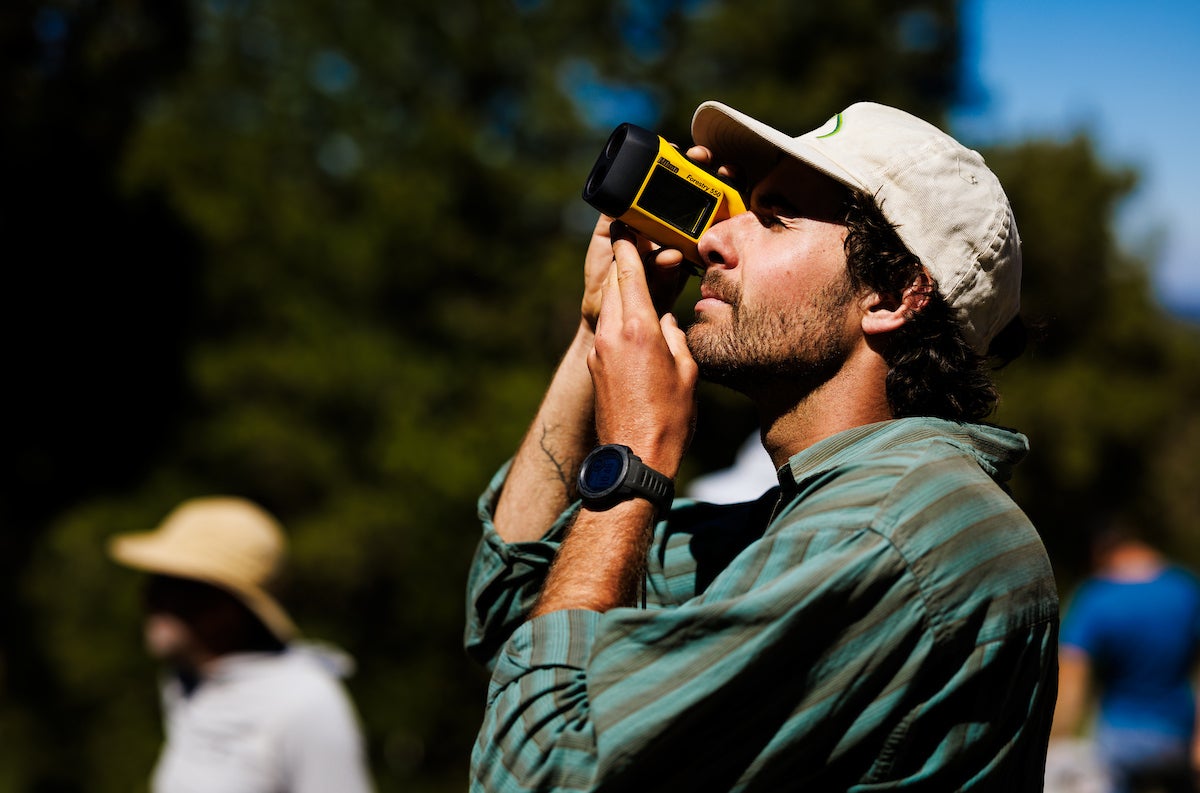
Ritter, Kauffmann and the students used laser rangefinders to measure the height of the tree — which had last been recorded as over 80 feet tall — and found that it had grown about eight feet. They also used measuring tapes to record the diameter — which had increased by several inches — and calculated the canopy spread, which is the horizontal spread of the branches and leaves.
“Some of this is science that was done 100 years ago, but it’s still fun and interesting,” Ritter said.
Along with Kauffmann — a conifer expert, Cal Poly Humboldt professor and Ritter’s coauthor of the recently-published book “California Trees,” which recently won the 2025 National Outdoor Book Award — professor Jenn Yost and other notable botanists joined the trip.
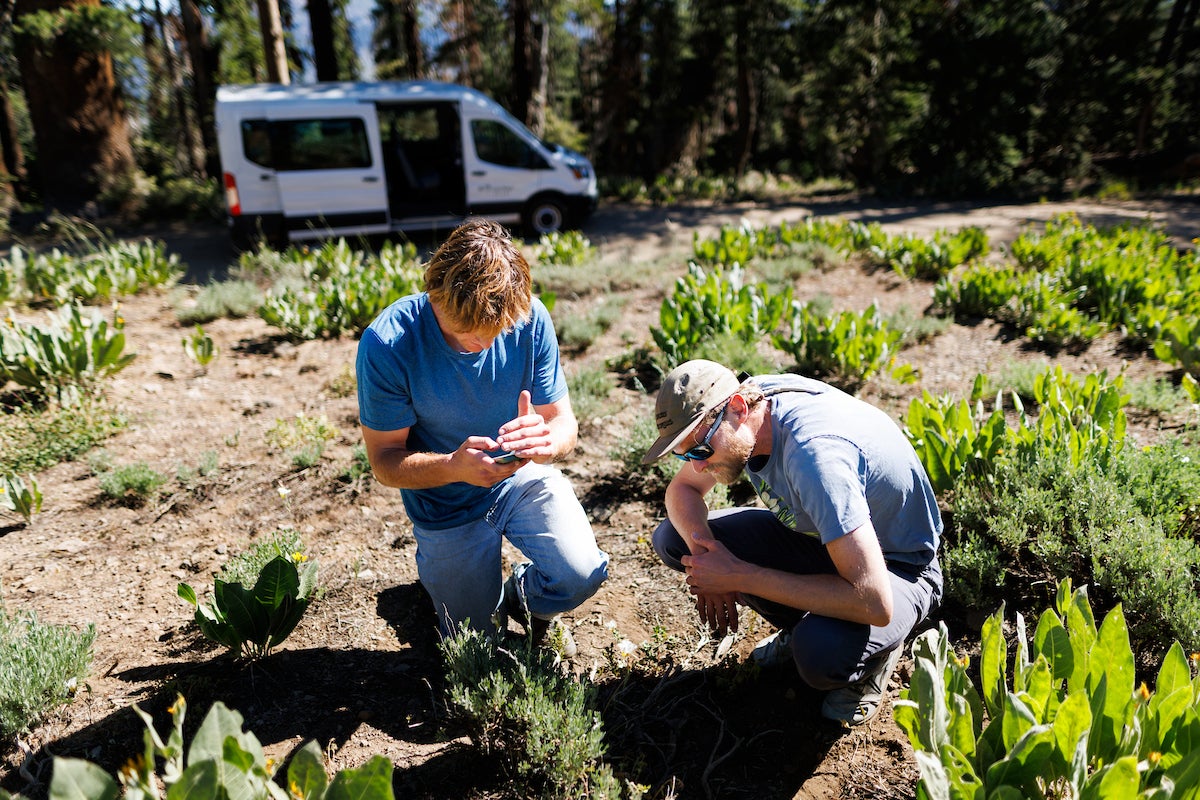
"It was really nice getting to talk to the professionals on the trip, some of whom had come from nontraditional degree paths like mine,” Jackson, who earned a degree in political science, said. He added that his experiences on the trip motivated him to apply for a graduate program at Cal Poly, which he will start in 2026. “It reinforced my decisions. I got to talk to really amazing people who are now colleagues and friends in the field.”
For Zach Harris, who graduated in June, the experience was “as hands-on as you could get.”
“It was great to just be with everyone and work together to find the best measurements and collect data on this tree,” Harris said. “It was a botany trip, but the most important aspect of it was this sense of community with people in the field.”
Want more Learn by Doing stories in your life? Sign up for our monthly newsletter, the Cal Poly News Recap!

